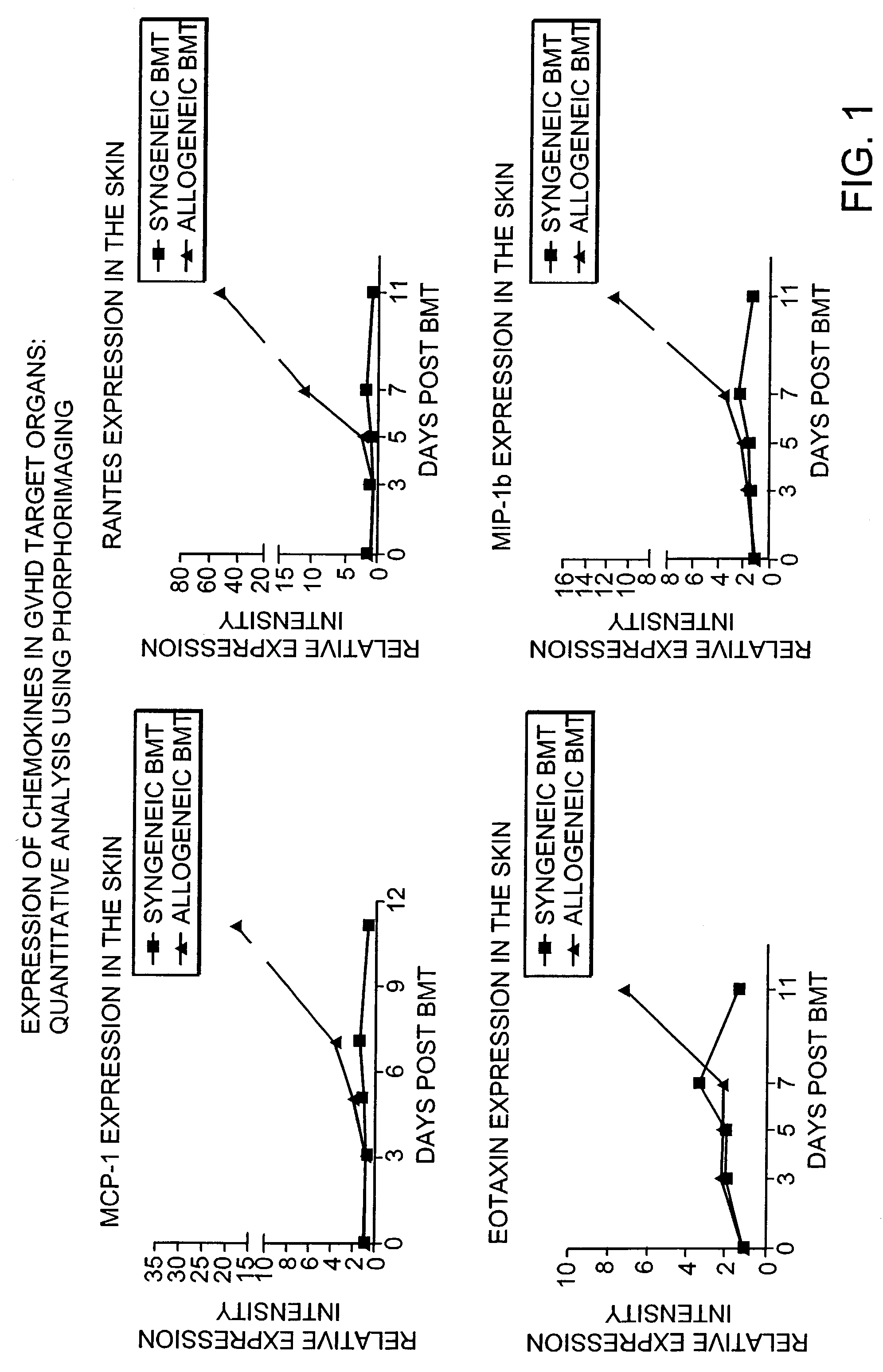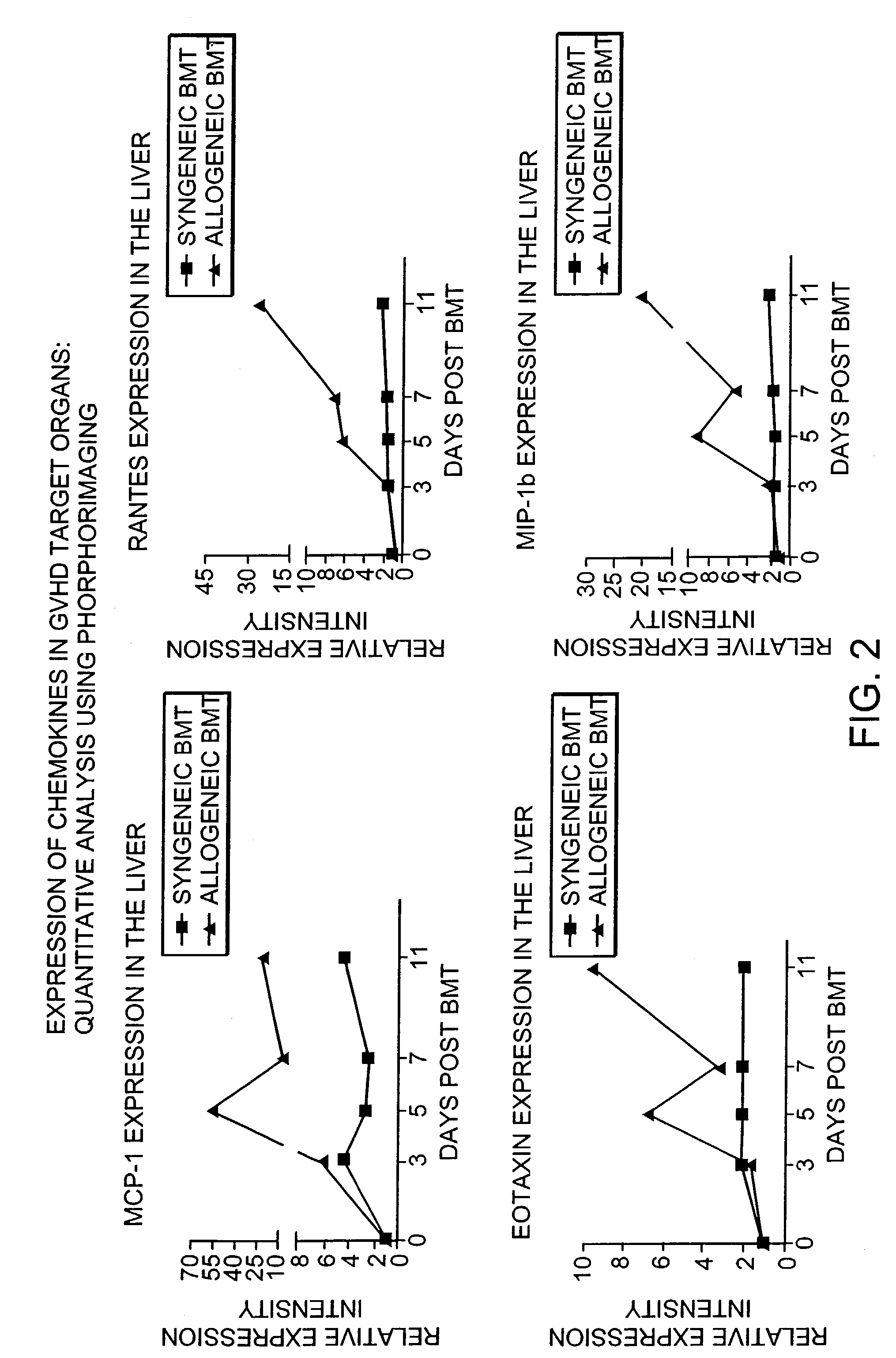Blockade of T cell migration into epithelial GVHD target tissues as an approach to achieving anti-tumor effects against lymphohematopoietic malignancies without GVHD
a technology of t cell migration and target tissue, which is applied in the field of treatment of hematologic disorders, can solve the problems of graft-versus-host disease, gvhd, and associated t cell depletion, and achieve the effect of reducing gvhd and gvhd associated
- Summary
- Abstract
- Description
- Claims
- Application Information
AI Technical Summary
Benefits of technology
Problems solved by technology
Method used
Image
Examples
examples
Treatment of Hematologic Cancers
[0131]The following provides a protocol for the treatment of a human subject having a hematologic cancer in a preliminary clinical setting. The protocol describes the major components of the treatment, the therapy to be provided to the subject, pre- and post-treatment evaluation, and supportive care likely to be needed in the course of the treatment. This protocol is exemplary of an embodiment of the invention and is not limiting.
The treatment consists of four major components:
[0132]1. Conditioning therapy, e.g., with cyclophosphamide 200 mg / kg and thymic irradiation (7 Gy) and BMT.[0133]2. GVHD prophylaxis, e.g., with anti-thymocyte globulin (ATG) and cyclosporine.[0134]3. Post-transplant supportive care (antibiotics, transfusional support, hemopoietic growth factors, etc.)[0135]4. Donor leukocyte infusions (days +35, +56).[0136]5. Thymic irradiation except subjects who have received previous mediastinal radiation therapy. Scheme of therapy is as fol...
PUM
| Property | Measurement | Unit |
|---|---|---|
| frequency | aaaaa | aaaaa |
| refractory | aaaaa | aaaaa |
| non-neoplastic | aaaaa | aaaaa |
Abstract
Description
Claims
Application Information
 Login to View More
Login to View More - R&D
- Intellectual Property
- Life Sciences
- Materials
- Tech Scout
- Unparalleled Data Quality
- Higher Quality Content
- 60% Fewer Hallucinations
Browse by: Latest US Patents, China's latest patents, Technical Efficacy Thesaurus, Application Domain, Technology Topic, Popular Technical Reports.
© 2025 PatSnap. All rights reserved.Legal|Privacy policy|Modern Slavery Act Transparency Statement|Sitemap|About US| Contact US: help@patsnap.com



